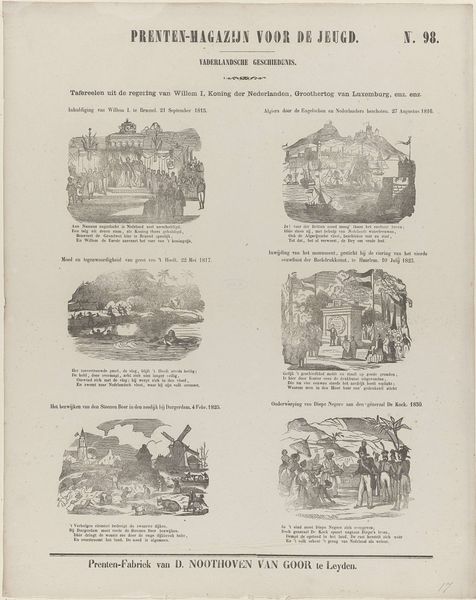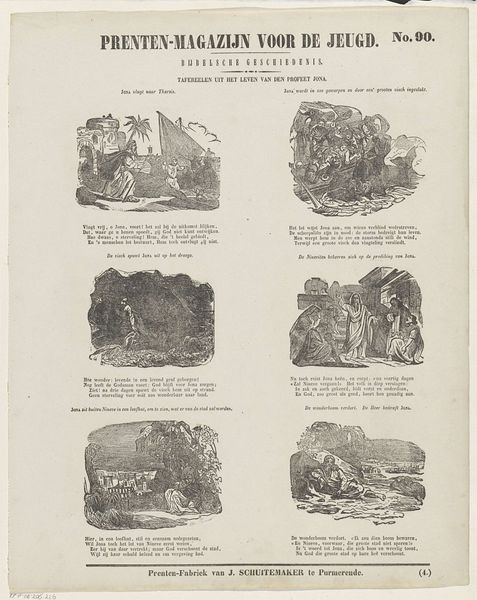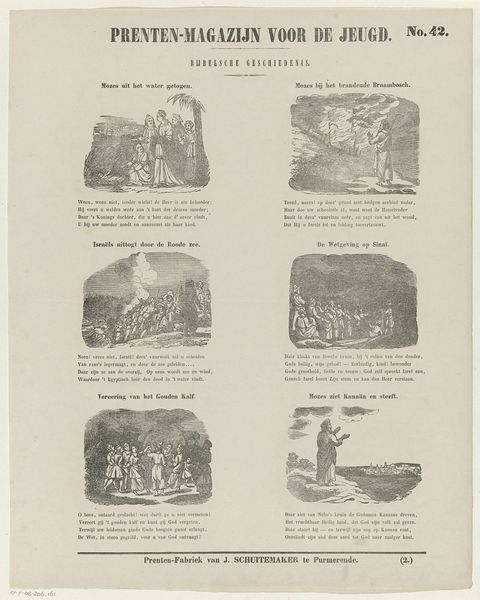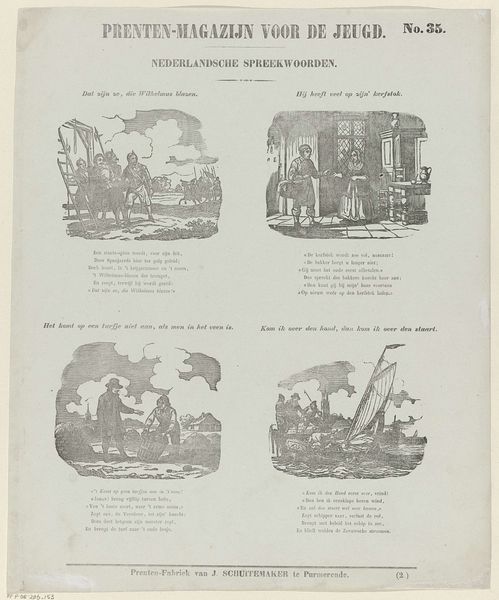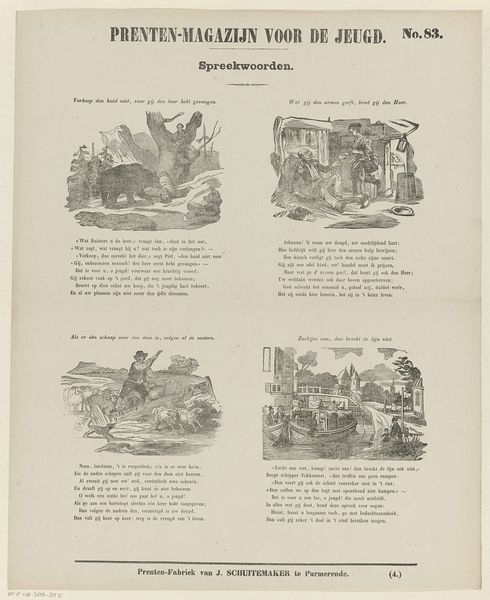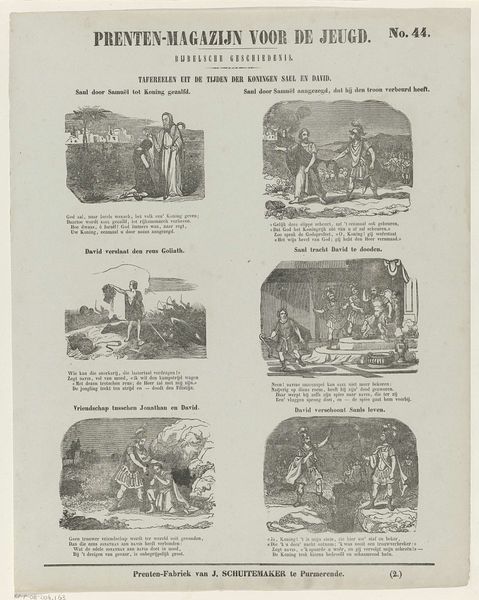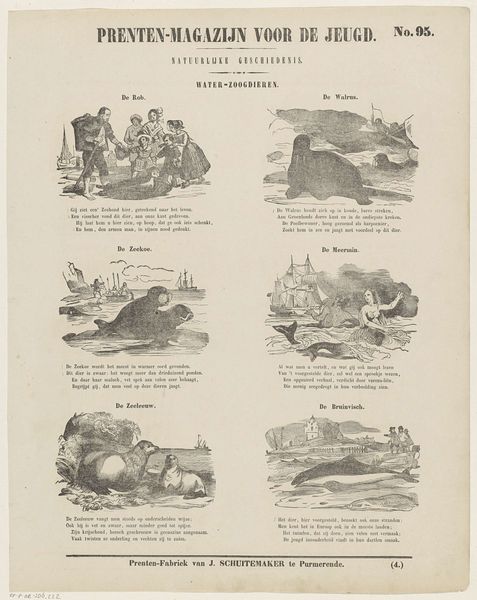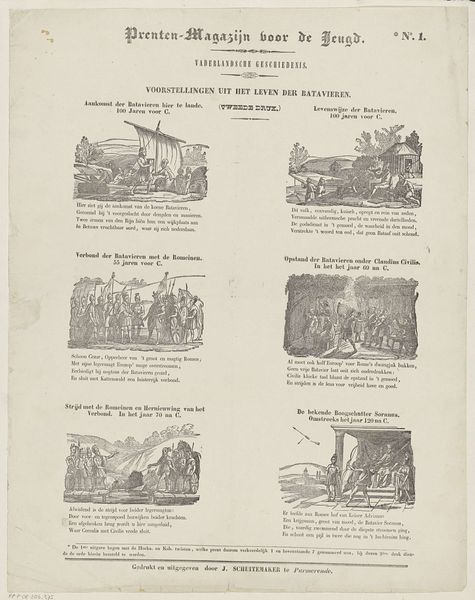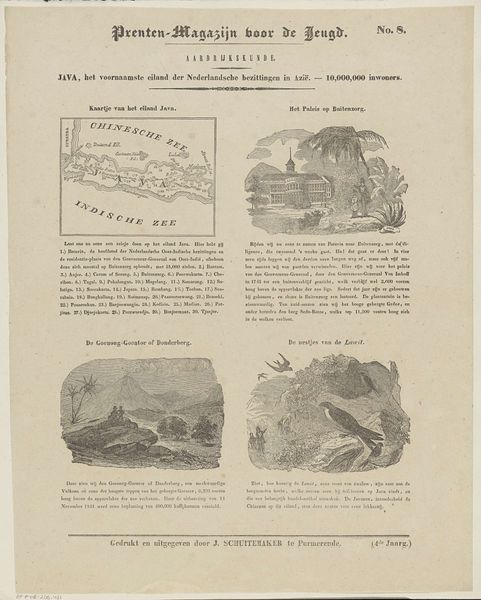
graphic-art, print, engraving
#
portrait
#
graphic-art
#
narrative-art
# print
#
old engraving style
#
landscape
#
figuration
#
line
#
history-painting
#
engraving
Dimensions: height 415 mm, width 326 mm
Copyright: Rijks Museum: Open Domain
Curator: This graphic work by Jan Schuitemaker, from 1850, is titled "Scenes from the Time of the Judges." The linear quality gives it a primitive yet powerful visual effect. Editor: It's rather bleak, isn't it? A stark, almost theatrical presentation of struggle and devotion. Each vignette seems filled with intense emotion despite the limited visual detail. Curator: Yes, the use of line, the very stark contrast, creates that dramatic tension. The compositions in each frame, although simple, guide your eye deliberately through the narrative segments. Editor: I am immediately drawn to the image of Samson carrying the gates. It’s such a potent symbol of strength, and of burdened faith, even if it appears somewhat naive here. Curator: Notice how the artist uses landscape and figuration, in tandem. He places importance on both background and central characters to enhance the narrative. Editor: The religious theme is strongly present, a morality tale for the youth implied by the image title. One sees it from a collection made "For the Youth." The repetition of symbolic imagery—the doors, the wheat fields, the armed warriors —reinforces the weight and legacy of the biblical stories. Curator: Indeed. Schuitemaker used engraving techniques and print to maximize availability to a wider audience during his era. Editor: Each little tableau functions as a mnemonic for deeper religious and cultural values. Despite its rather simple aesthetic, the picture has a great evocative quality. Curator: A successful distillation, wouldn't you say, from complexity to a digestible visual statement, framed to offer both visual information and, to its initial public, edification. Editor: Absolutely. It speaks to a cultural need to visualise and thereby comprehend these foundational narratives through symbolic representations.
Comments
No comments
Be the first to comment and join the conversation on the ultimate creative platform.
